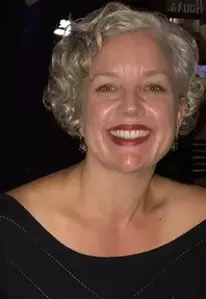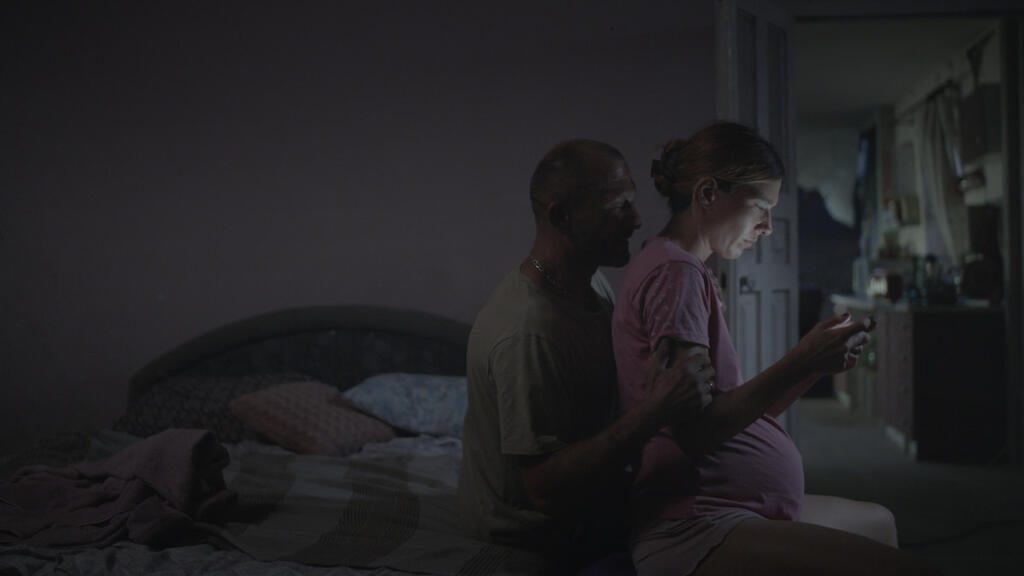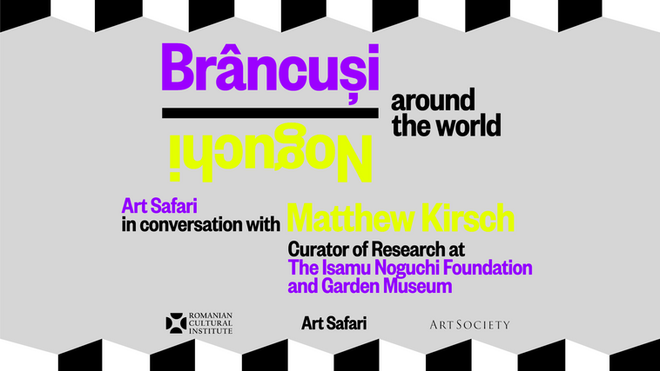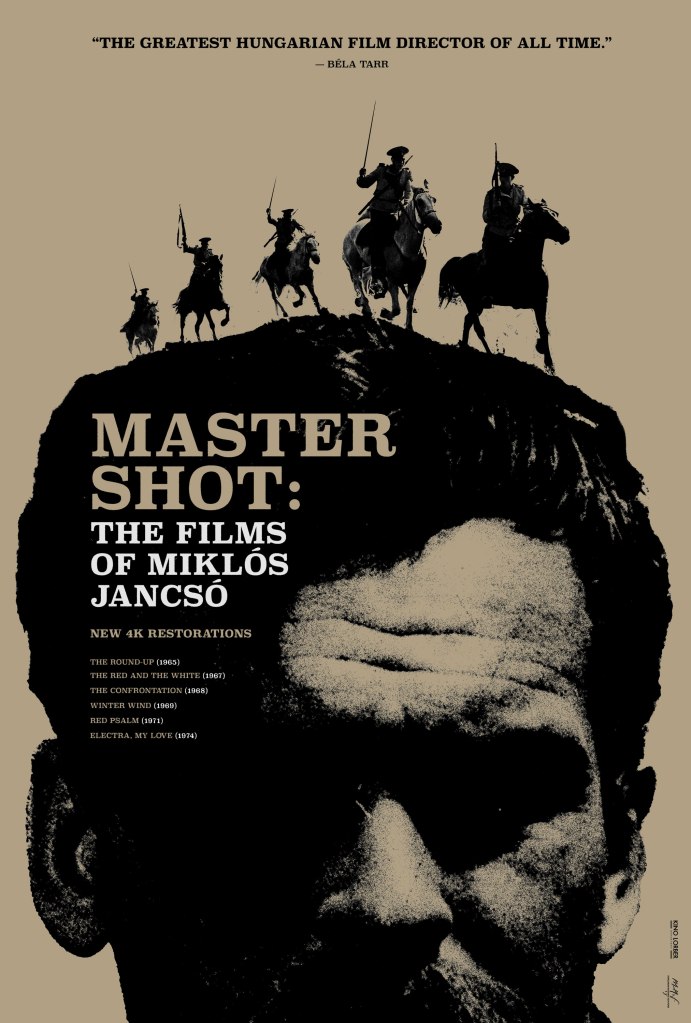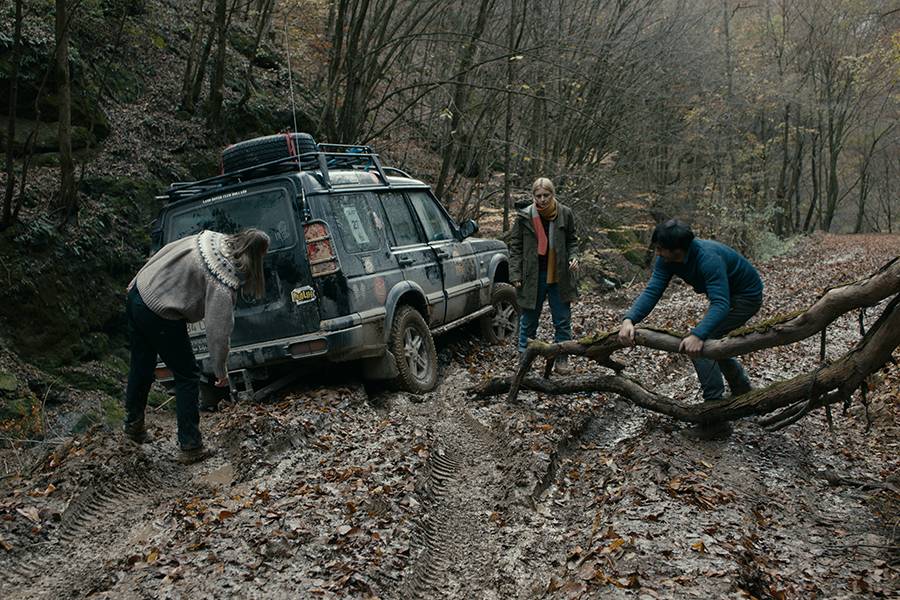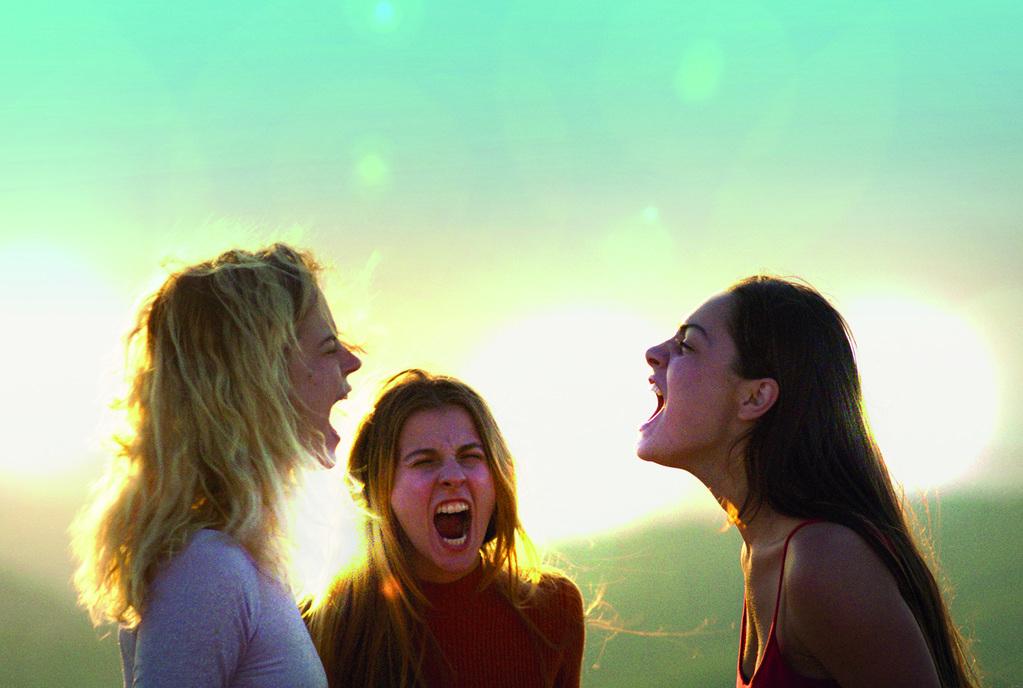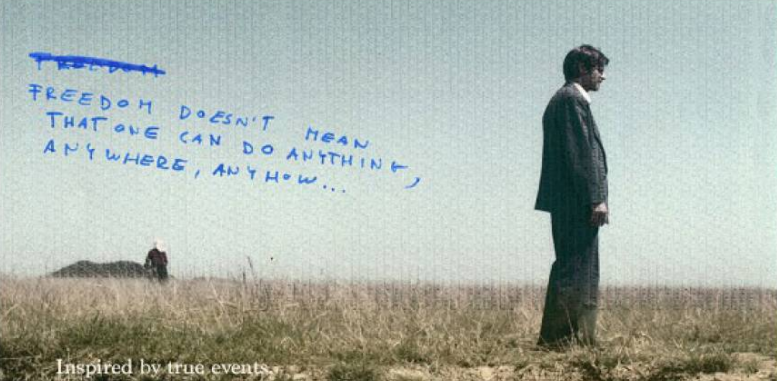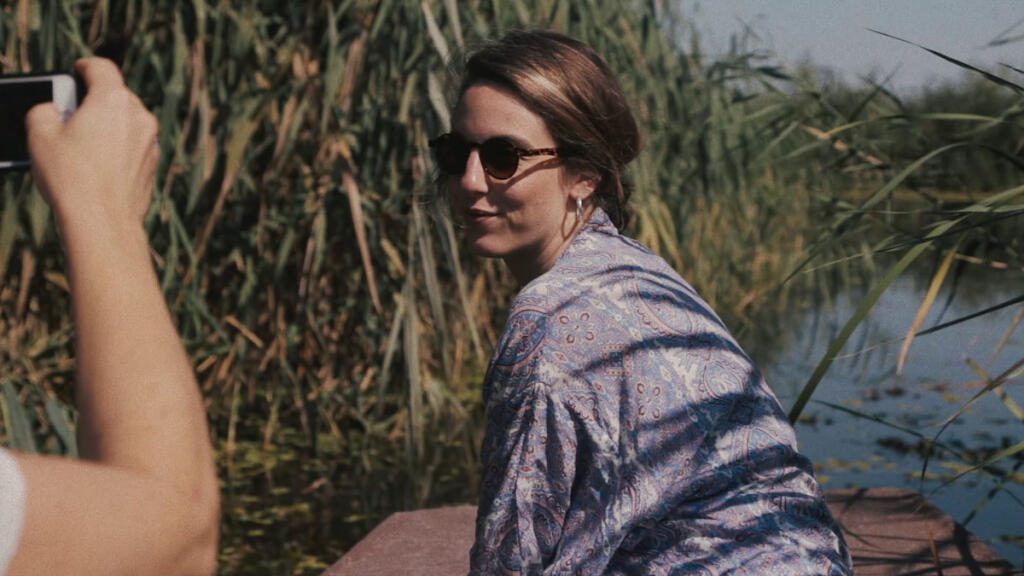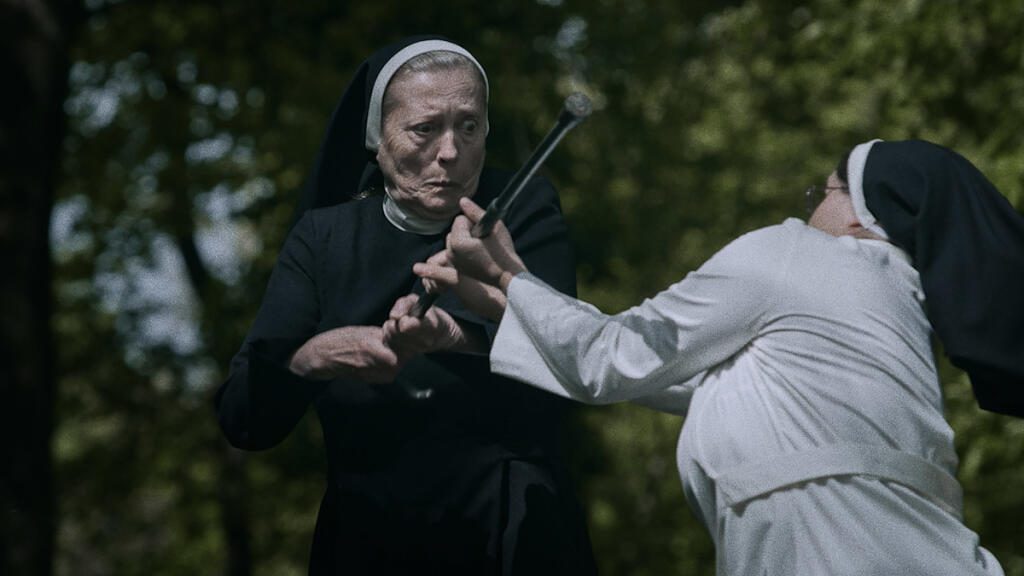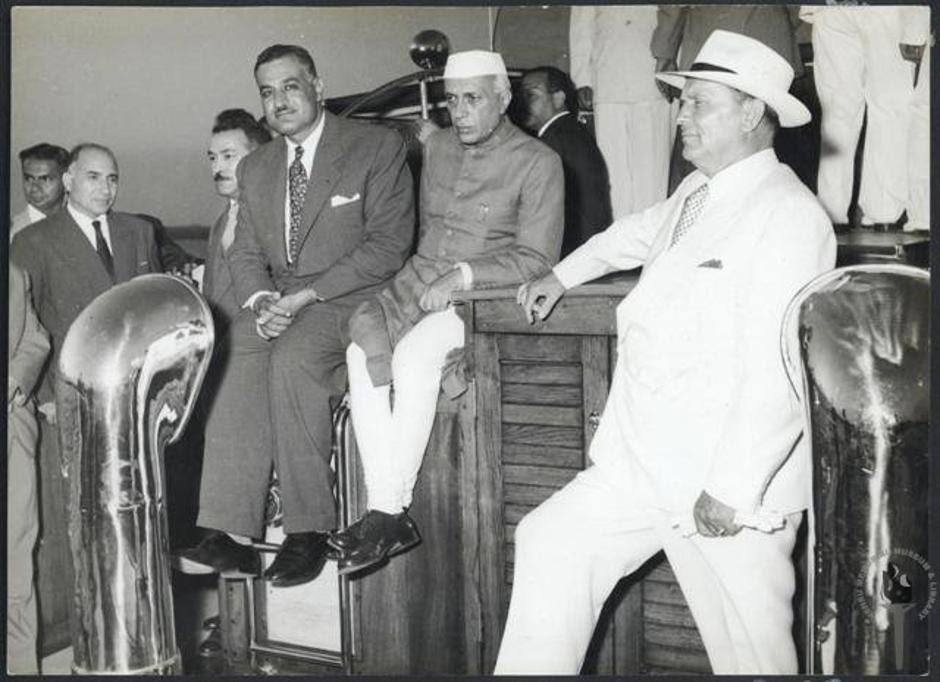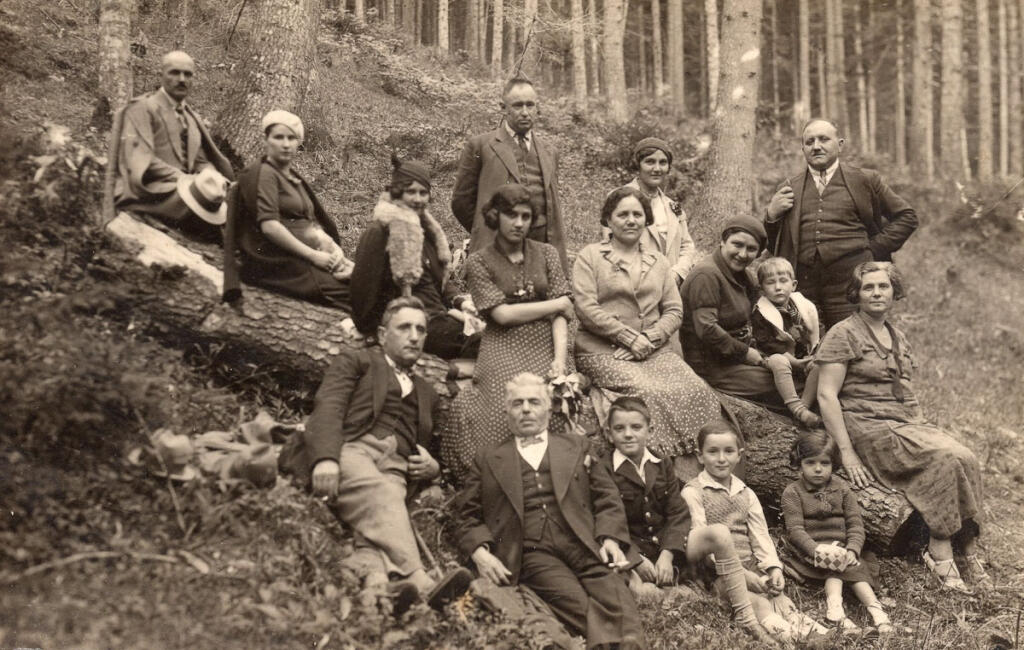Review: Lend Me Your Character

| Author | Dubravka Ugrešić |
| Translators | Celia Hawkesworth, Michael Henry Heim, Ellen Elias-Bursac |
| Genre | Fiction |
| ISBN | 987-1-948830-64-5 |
| Format | 270 pages |
| Language | English |
| Original Language | Croatian |
| Publisher | Open Letter |
Reviewed by Allie Rigby
Dubravka Ugrešić’s Lend Me Your Character is a kaleidoscopic amalgamation featuring one novella, seven short stories, and several sections of author’s notes. In classic Ugrešić form, fairy tale elements abound–magic, crass humor, textile allusions to sewing, grotesque imagery, repetition, and warnings fill the pages. Ugrešić is not shy about her reference to fairy tales: many of these stories were originally published in Zagreb as part the collection, Life is a Fairy Tale, in 1983.
With translations as recent as 2022 (from Croatian into English) and author’s notes that feel like behind-the-scenes bonuses, this collection from Open Letter Books is both humorous and serious. The stories often center hyperaware narrators interjecting themselves into the text, trying to do best for ordinary characters amid absurd situations. Ugrešić’s opening work, the novella “Štefica Cvek in the Jaws of Life” that was translated by Celia Hawkesworth, plays with the idea of storyteller as clothier and clothier as storyteller. Chapter titles like “Key to Symbols,” “The Pattern,” and “Designing the Garment” make this connection clear, as do various symbols dissecting sections of the story, which can be decoded if readers refer to the “Key to Symbols” chapter. These visual cues implore the reader to “Cut the text along the dotted line,” or “Make a metatextual knot and pull tight as needed,” thus giving readers a more active role as recipients of the story (12).
Breaking the fourth wall is one of Ugrešić’s signature moves and while these directional symbols give the novella a choppy feel, it does blur the line between fiction and reality, which the author does throughout her fiction. Sadly, we can no longer ask Ugrešić about her fascination with textile fairy tale motifs–the buttons, the sewing, and the like–she died in Amsterdam on March 17, 2023. Only one month before her story collection debuted from Open Letter Books, Ugrešić passed, reportedly surrounded by “family and friends.”
Now readers are left with this last and most recent collection of Ugrešić, unless something comes out of the woodwork from her literary estate. After her novella, Ugrešić offers her first set of author’s notes under “Finishing Touches,” translated by Celia Hawkesworth, followed by “How to Ruin Your Own Heroine,” translated by Ellen Elias-Bursać. Finally, we have seven short stories. “The Kharms Case” and “A Hot Dog in a Warm Bun” may stir the most conversation for their hilarity. “Who Am I?” and “Button, Button, Who’s Got the Button?” carry Ugrešić’s curiosity for textile objects and their symbolic potential.
What next, for characters and for readers of Ugrešić? “I have to keep sewing, Štefica, your loose ends can’t be tied up just yet,” Ugrešić writes in her novella (58). For now, assemble the fabrics and find a proper place for each button.

Allie Rigby is a poet, editor, and educator with roots in Orange County. In 2023, she completed a year-long Fulbright fellowship in Romania where she taught creative writing at Universitatea Ovidius din Constanța. She holds a master’s degree in English: Creative Writing from San Francisco State University. Allie loves connecting with people to develop and share impactful stories that generate cross-cultural dialogue. For her most recent book of poetry and other writing, please visit www.allierigby.com or @allie.j.rigby.
Review – Živa (The Death of the Goddess Živa)
Liquid Eco-Aisthēsis: Elemental Sensorium and Femininity in Živa
Essay by Maja Manojlovic
Živa (2022), a short experimental film by Nataša Prosenc Stearns, unfolds in nine scenes, each characterized by the prominence of one of the natural elements. However, just as our planet and bodies are primarily composed of water, so does its liquid, wavy fluidity comprise this film’s images. While fluid aesthetic might be Prosenc Stearns’ signature expressive tool that defines all of her work, Živa represents the culmination of its purposeful application through what I characterize as liquid eco- aisthēsis. Eco-aisthēsis describes ecologically-accented sensory experiences that both expand and modify our senses and perceptual field. Experiences of eco-aisthēsis, therefore, foreground the environment and its elemental forces, while also generating novel ways of thinking about the world and our place in it. Imbuing every image with the dynamism and vitality of elemental forces of water, Prosenc Stearns creates liquid eco-aisthēsis, imparting an experience that is powerful, just as it is intimate. It is an experience of a deeply embodied, elemental femininity, in the sense of both being primal and composed of natural elements. This elemental femininity is both eros and thanatos; it reverberates across human and non-human Nature and Cultures, and therefore even beyond the film itself. Liquid eco-aisthēsis is formally expressed with sophisticated layering of the images; like water, the layers are transparent, creating an impression of both visual depth and existential vulnerability, while their fluidity simultaneously conveys resilience and adaptability.
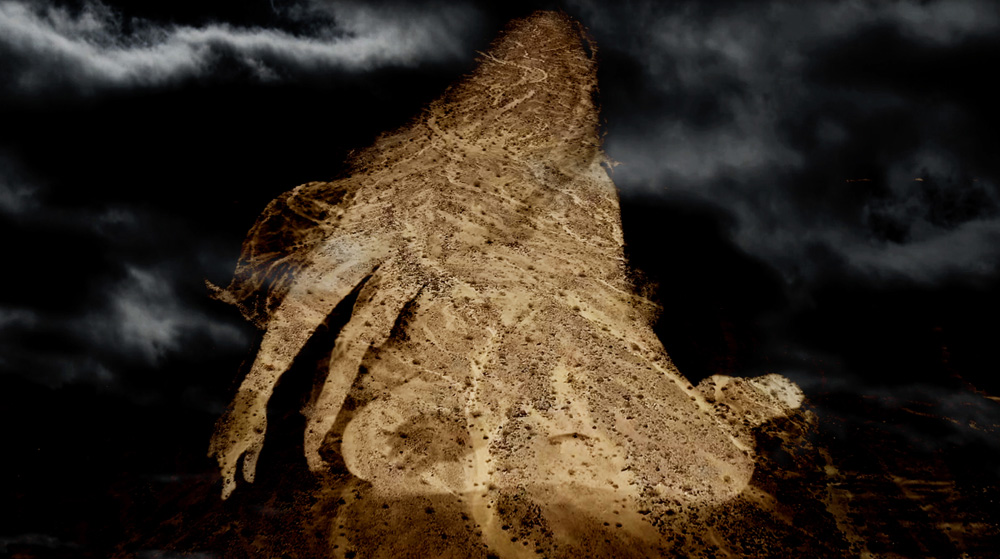
Živa opens up into a view of dark skies, with heavy clouds lingering, as if awaiting a thunderous storm. Accompanied by a languid orchestral score, implying a deep time of unspecified longing, the heavy atmosphere compares only to an anticipation of a loss of love. The ominous skyline transforms into the softly curling, clear waters of a lake, its bottom covered with moss-like greenery. Waving on the surface of the lake, a text appears, revealing that this is where the temple of goddess Živa (meaning Life, Alive, Living) resides. The contours of a female figure, both reflecting and reflected in the water, extends her hands. It is Bogomila, the guardian of Živa’s temple, with an offering for her goddess. This tender image flows into a view of the vein-like paths spreading across the Earth’s surface as if they were a part of a living body. Slowly emerging into view and superimposed over this image, is a figure of a preacher. Ensues the commotion of whirling figures that reflect the movements of a battle. A fiery female figure rises into the darkness of the stormy skies. Both the figure and everything that surrounds her is consumed by the raging violence of the fires fueled by war. The female figure, connecting the skies and the earth, mourns the devastation of the blood spilled. Cold whiteness of the winter frost enfolds the tree-like, female figure in its icy embrace. What happened to goddess Živa? She lives on, incorporated in the elemental forces of nature. As the force of crystal green river cleanses Bogomila’s grief and transforms her, Živa is also fused with Virgin Mary. The three of them alchemize to generate a feminine elemental force, rising up into a new dawn, to show the senselessness of wars.
Stunningly beautiful, Živa (9.52 min) is inspired by the Slovene national epic The Baptism at the Savica (Krst pri Savici), written by France Prešeren in 1836. The film was commissioned by Gorenjska Museum in Slovenia and is part of the permanent exhibition in Prešeren House Kranj. Prešeren is considered the greatest Slovenian poet, whose work defines the country’s national identity.
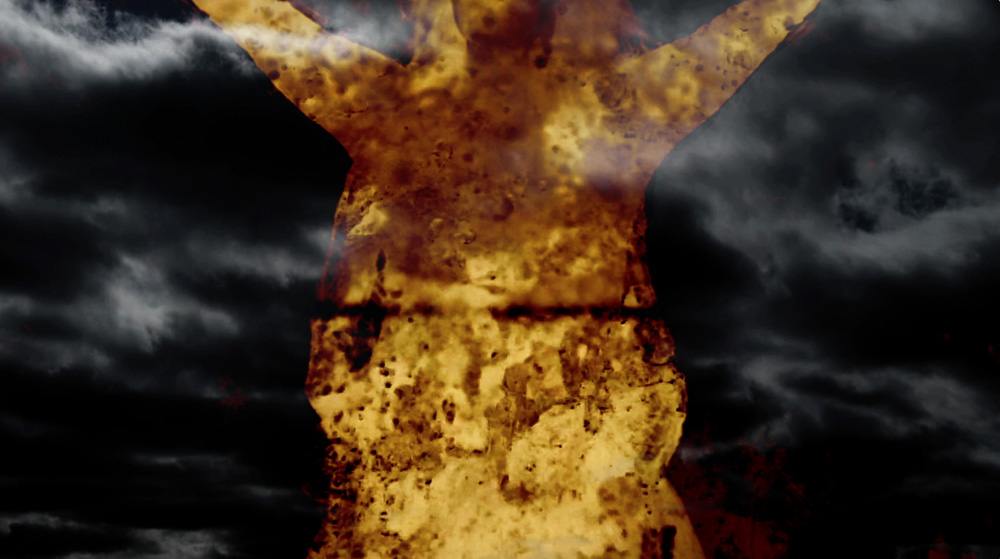
It is therefore important to consider the enormous weight of Prosenc Stearns’ endeavor as she creates along his poem, which tells a story about the violent Christianization of Slovenes in the 7th century. It culminates in the bloody battle between two Slovenian leaders, the pagan Črtomir and Christianized Valjhun, waging a brotherly war. The pagans are defeated, and Črtomir is the only survivor. Unbeknownst to him, he is saved by the prayers of his beloved Bogomila, a beautiful sixteen-year-old virgin, who has already accepted the Christian religion. Bogomila was formerly guardian of the temple of Živa, the playful pagan goddess, symbolizing life. Črtomir and Bogomila briefly reunite, and she persuades him to get baptized. His baptism takes place at the waterfall of river Savica, springing from the mountains of Slovenian Alps, marking Črtomir’s loss of Bogomila and beginning of his path as a preacher.
By focusing on Črtomir’s embattled journey, Prešeren’s lyrics express his pain of unrequited love, as well as deliver a political message for a unification of Slovenes and strengthening of their national identity in the 19th century. Živa’s expressive power, however, lies in the sublime orchestration of sensory-perceptual experiences of liquid eco-aisthēsis. With it, Prosenc Stearns delivers a no less political message for the 21st-century world, hanging on the brink of ecological catastrophe. The filmmaker achieves this by boldly expounding on the multilayered, granular, and ecological perspectives inscribed in the (elemental) feminine. The latter is only alluded to in the poem when Bogomila justifies her conversion to Christianity because it professes love between all men. Živa, however, transmutes the poem’s unilateral patriarchal view and assigns it a set of new values, thus highlighting the deep, multiple, and feminine perspectives. These are embodied in the figures of Bogomila, Živa, and Virgin Mary, actualized in and through the complex layering of natural elements and their forces.
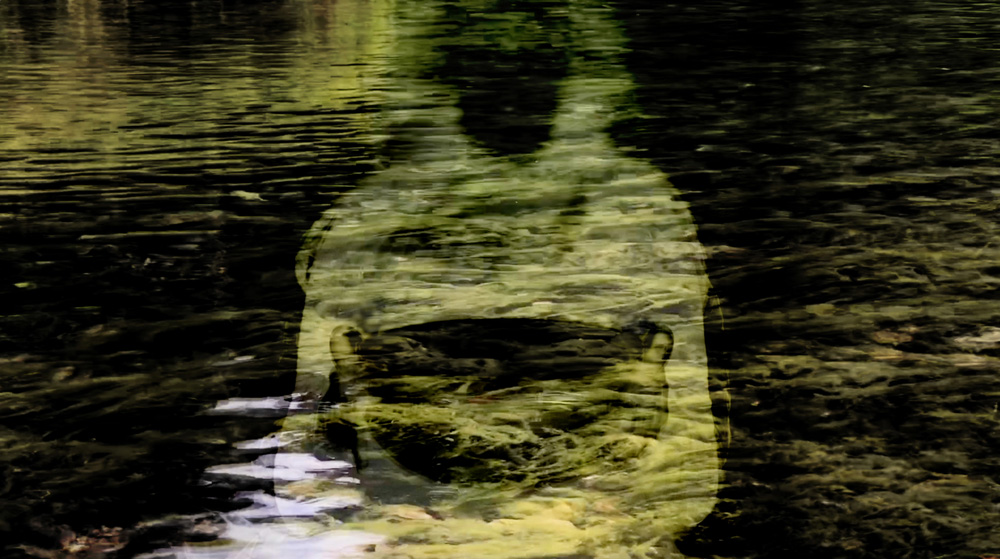
Prosenc Stearns envisions young Bogomila’s unconsummated, yet impassioned, love for Črtomir as a catalyst that alchemizes the earthy, life-giving Živa, and celestial, light-bearing Virgin Mary, into the elemental forces of Nature. In Živa, the elemental forces flowing through the images of earth, lake, river, sky, clouds, wind, and fire, figure as a connective tissue of all Life on Earth. Immersed in this film, we can sense the natural elemental forces weaving such a web of dynamic ‘neural’ connections. Indeed, the film’s liquid eco-aisthēsis sensitizes us to both human and non-human, organic and non-organic, while also creating a granular, sensory tapestry beyond these dualisms, which can be understood as an elemental sensorium. By inter-relating the diverse and divergent forms of being and becoming all over the planet, elemental sensorium, gestated in, and birthed from Živa, might also allow us to not only sense, perceive and feel differently, but also think, act, and breathe more responsibly, attuned to the wavy rhythms of our planet.
Formally, elemental sensorium emerges from the meticulously executed visuals, effectively supported by the musical score by Milko Lazar. On the one hand, it’s generated by Prosenc Stearns’ dynamic layerings and juxtapositions of images of natural elements, blended with the contours of human bodies. On the other hand, it emerges from the unexpected and gravity-defying movements of elemental forces. For instance, elemental sensorium can be seen in the awe-inspiring scene with the massive, crystal-clear river, its waters flowing upwards, tenderly enfolding the contours of Bogomila’s figure. Its affective force is amplified by the high tones of a simple piano composition. As Bogomila’s body is only a reflection of the elemental forces of water, and the scene’s affect is achieved by blending human and elemental forms defying anthropomorphism, elemental sensorium also implies elemental femininity. Both elemental sensorium and femininity thus comprise a living fabric of planetary connectivity.
To sum up: Živa’s liquid eco-aisthēsis generates an alternative model of non-anthropocentric and elemental experiential possibilities. It offers an experiential engine, which, fueled by an elemental femininity that both subsumes and transcends the elemental forces of nature, as well as national and cultural borders, invites a planetary perspective on our individual and collective living, together.
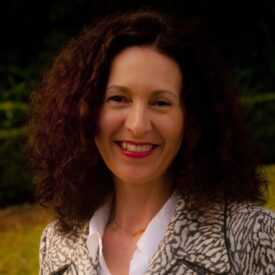
Dr. Maja Manojlovic is a Lecturer and Faculty Advisor for Writing II Pedagogy at the UCLA Writing Programs. Her academic background is in Cinema and Media Studies, specializing in phenomenology, aesthetics, and cultures of digital film and emerging media. On the one hand, her current research focuses on environmentally-themed experimental and documentary films, and on the other hand, on the aesthetics of XR technologies and their effects on how we perceive our physical environment and our place in it. She was born in Skopje, North Macedonia, and grew up in Ljubljana, Slovenia. Traveling by train among the two former-Yugoslavian republics most of her childhood, she fell in love with multilingual and multicultural environments. Living in Los Angeles and its global community of peoples for the past 27 years, she has forged friendships across the five continents. She regularly travels between LA and Europe, as well as elsewhere in the world. Her greatest joys in life are discovering new cultural and intellectual landscapes, and seizing the magical moments of connection and creativity with others.
SUPPORT SEEFEST
Not a member yet? Become an art patron with other SEEfest arthouse aficionados in support of great events and programs, as well as our mission to keep you informed about initiatives from our wide network of fellow cultural organizations.
We Welcome YOU!
The Museum of Unconditional Surrender by Dubravka Ugrešić – Book Review
The Museum of Unconditional Surrender
Translated into English by Celia Hawkesworth
Reviewed by Natasha Ravnik
While reading Dubravka Ugrešić’s book, The Museum of Unconditional Surrender, I wondered if humankind had learned anything. Although Ugrešić wrote this work between 1991 and 1996, when her homeland of Yugoslavia was being destroyed by war, her words remain current.
There are many threads in Ugrešić’s writing that are worth exploring, but I have limited this review to just one aspect of the work: the life of the exile.
The Museum of Unconditional Surrender is unusual from the beginning: it starts with a catalogue of the contents of the stomach of Roland the Walrus in the Berlin Zoo and continues with an experimental mixture of genres. The use of narrative from various viewpoints, diary entries, and quotations parallels the recurrent fragmentation effects of trauma on the psyche – shards of not fully put back together-able language, memories, and images, bring us back to a starting point that can never be the same.
By definition, an unconditional surrender is one in which no guarantees are given to the surrendering party. It can be demanded with the threat of complete destruction, extermination, or annihilation. To what kind of life does the refugee surrender to?
“Those are all cold, melancholy, objective images (or more precisely: verbal photographs) from a past life in a former country which it will never again be possible to connect into a whole,’ writes Mihajlo P. in a letter.”
The Museum of Unconditional Surrender is a disparate archive of the bleak reality of loss as a result of forced migration. The stories within are mournfully human – they endear with their naked vulnerabilities. Displayed openly like a pack of cigarettes on a card table at a flea market are the visceral consequences of a nation’s spontaneous dissolution.
“10. ‘Refugees are divided into two categories: those who have photographs and those who have none,’ said a Bosnian, a refugee.”
With exquisitely simple sentences, Ugrešić brings out complex truths – the utter senselessness of the effects of war is tied up with a tender bow. Her prose unfurls unexpectedly like a poem, a jewel offered on a platter of tears, shiny but dissolving.
“Like the train of a gown, he dragged after him his secret, which, it seems, bore the simple name: indifference.”
Much of the narration is from a singularly feminine viewpoint ranging from a quiet melancholy,
“What a woman needs most is air and water.”
to a lonesome inevitability,
“As she crossed the Yugoslav border she was suddenly afraid, either because of the custom official’s black mustache, or the finality of her decision. And as she opened her suitcase, thinking in panic that she still had time to change her mind and go back, it slipped out of her hand and scattered its modest contents over the floor. She remembers the rolling apples (“There were lots of them, lots of apples,’ she says. ‘I don’t know myself why I had packed so many.’) Her memory was stuck on that picture of apples rolling over the floor. And it was though the apples had made the decision and not her: she had to pick them all up, and then the train left…”
Dubravka Ugrešić’s gift is the struggle: internal and external – of longing for the seemingly impossible – simply to belong, and in peace. Descriptions of oppressive banality under communism mingle with the tell-tale vacant stupor of a person without a home, an address-less individual with no country or state, constantly in motion – unmoored due to outside circumstances.
Her words are precise, chosen with exquisite care. Much like a museum exhibit, many of her paragraphs are numbered, catalogued, and exact. Equally precise is the English translation.
The pain of exile is not pretty, but Ugrešić’s words capture a sadness that is quite beautiful. The real tragedy of losing one’s country and the baggage (or lack thereof) that goes with it, how this loss seeps into the cracks of everything, reaching the most nuanced recesses of one’s personal identity.
“I hear my heart beating in the darkness. Pit-pat, pit-pat, pit-pat…I feel touched, as though there were a lost mouse inside it, beating in fright against the walls. Somewhere far behind me the landscape of my deranged county is ever paler, here, in front of me, are steps that lead to nowhere.”
Dubravka Ugrešić is a literary powerhouse, and The Museum of Unconditional Surrender is a book to be savored again and again.
ABOUT THE REVIEWER
Natasha Ravnik is a first-generation Slovenian American writer living in the San Francisco Bay Area. She is fascinated by stories of cultural resilience, with a particular interest in women’s voices. Natasha is currently writing a fictional memoir based on Slovenian migration stories. Her documentary short film, “Moja Nonica – My Grandmother” was a finalist at the 2016 SEEfest Project Accelerator. A big fan of SEEfest, Natasha believes in the power of art to encourage dialogue, in the hope of finding mutual understanding. She is constantly searching for beauty and common ground.
SUPPORT SEEFEST
Not a member yet? Become an art patron with other SEEfest arthouse aficionados in support of great events and programs, as well as our mission to keep you informed about initiatives from our wide network of fellow cultural organizations.
We Welcome YOU!
Ukraine in the 17th edition of SEEfest
The 2022 South East European Film Festival announces the inclusion of Ukraine in the 17th edition
The 2022 South East European Film Festival announced the inclusion of Ukraine in the program, with two outstanding films, the 2022 Sundance directing award winner Klondike by Maryna Er Gorbach and the US premiere of Blindfold by Taras Dron. Both films focus on ordinary people trying to live their lives under the constant threat of new conflict and war traumas that just won’t go away.
“SEEfest is proud to bring to L.A. audiences these remarkable films with strong female characters at the center of the story,” says Vera Mijojlic, founder and director of the festival. “We have previously worked with Maryna Er Gorbach who co-directed, with Mehmet Bahadir Er, 2020 festival entry Omar and Us. We look forward to continuing this collaboration and supporting our colleagues in Ukraine.”
Info about Blindfold is here. Klondike info is here.
Two short animation films from Ukraine are also in the program. The 17th annual edition of the Los Angeles-based film festival is slated to unfold as a hybrid, with in-person as well as virtual screenings on the Eventive platform.
SEEfest is proudly co-presented by ELMA, the L.A.-based foundation for European Languages and Movies in America.
SUPPORT SEEFEST
Not a member yet? Become an art patron with other SEEfest arthouse aficionados in support of great events and programs and our mission to keep you informed about initiatives from our wide network of fellow cultural organizations.
We Welcome YOU!
In Solidarity
Less than a quarter-century since the last deadly fighting was over in Eastern Europe the winds of war have again engulfed the region. Under attack, hundreds of thousands of civilians are fleeing Ukraine and pouring into neighboring countries. Non-Ukrainian residents and Ukrainians alike are seeking shelter in Romania and Poland, and farther afield. The danger of a widening conflict is ominously present.
Please check these two internationally recognized relief organizations working with refugees worldwide:
International Rescue Committee, the IRC, is already working on the ground in Poland; and the UN Refugee Agency, UNHCR, helping displaced families.
Romania has already accepted a large number of refugees, and the Embassy of Romania, together with the Romanian United Fund, has established Ukrainian Peace Fund to support health facilities with necessary supplies such as medicine, as well as food and hygiene items.
Art, especially visceral cinema such as recent movies by Ukrainian directors, brings us up close to what people on the ground experience. Art by itself may not stop tanks, but it gives the fuel to the human spirit to fight them.
Memorable films from the SEEfest archives
Some of the memorable films from the SEEfest archives about either the societies at war or in the post-conflict state include No Man’s Land, The Cordon, Before the Rain, Borderline Lovers, Kukumi, The Paper Will Be Blue, California Dreamin’, The War is Over, Medal of Honor, Valley of Peace, A Day on the River Drina, Fuse, Sarajevo, My Beautiful Country, Half Shaved, Babai, A Good Wife, Refugee 532, That Trip We Took With Dad, Politiki Kouzina, Omar and Us, Ethnophobia, The Grey War, Men Don’t Cry, The Other Side of Everything, The Diary of Diana B., Zana, So, What’s Freedom?, and Quo Vadis, Aida?
They are mementos of the past that should not be forgotten.
Cover image is a still from Quo Vadis, Aida?
SUPPORT SEEFEST
Not a member yet? Become an art patron with other SEEfest arthouse aficionados in support of great events and programs, as well as our mission to keep you informed about initiatives from our wide network of fellow cultural organizations.
We Welcome YOU!
Brâncuși, Miklós Jancsó and Ivan Cankar
Brâncuși Around the World
On the occasion of Brâncuși Day, on February 19, the Romanian Cultural Institute is launching, in partnership with Art Safari, as part of the ArtSociety initiative, a dialogue with the great museums of the world about the universal influence of the great Romanian artist.
The first stop is the Noguchi Museum where Curator of Research Matthew Kirsch challenges us to rediscover Brâncuși through his influence on another famous creator, Isamu Noguchi.
February 19 at 2 p.m. New York & Toronto time / 11 a.m. Los Angeles & Vancouver time / 9 p.m. Bucharest time.
Miklós Jancsó Retrospective
The recent Kino Lorber restorations of six films by Miklós Jancsó start on Friday, March 18th. at the Lumière Cinema:
- THE ROUND UP
- THE RED & THE WHITE
- THE CONFRONTATION
- WINTER WIND
- RED PSALM
- ELECTRA, MY LOVE
“The greatest Hungarian film director of all time” – Béla Tarr
All films are restored in 4K from their original 35mm camera negative by National Film Institute Hungary – Film Archive.
Discover Slovenian Writer Ivan Cankar – First English Translation!
Ivan Cankar, playwright, essayist, poet, and political activist, is regarded as the greatest playwright in the Slovene language and has sometimes been compared to Henrik Ibsen, Franz Kafka, and James Joyce.
This play translation project is a collaborative effort between Presernovo Gledališče Kranj, a professional repertory theatre located in the city of Kranj, Slovenia, and Crane Creations Theatre Company. This project is generously supported by the European Commission and the Slovene Government.
Ivan Cankar is known by many as the “undiscovered Eastern European Ibsen” and the “father of Slovene drama”.
About the Translator:
Micheal E. Biggins is a translator and Slovene language scholar. He has translated numerous Slovene titles to English, including the works of Drago Jancar, Tomaz Salamun and Nobel Literature Prize Nominee, Boris Pahor.
Team of translators:
Tom Priestly and Tina Mahkota (Lackeys, Beautiful Vida)
Rawley Grau (Depravity in At. Florian Valley)
Jason and Alenka Blake (The King of Betajnova)
Michael Biggins (Romantic Souls, Jakob Ruda, For the Good of the Nation)
We thank Tom Brandi from the Slovenian community in San Francisco for his steadfast efforts to promote Slovenian culture on the West Coast.
Support SEEfest
Not a member yet? Become an art patron with other SEEfest arthouse aficionados in support of great events and programs, as well as our mission to keep you informed about initiatives from our wide network of fellow cultural organizations.
We Welcome YOU!
South East European Filmmakers at Cannes Film Festival
7 Filmmakers From South East Europe Will Premiere Their Films In Cannes This Year
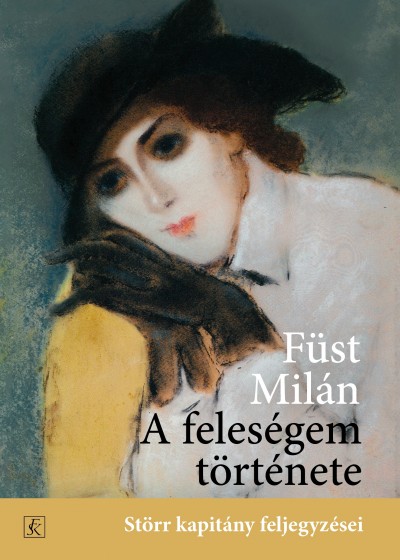 New films from Hungary, Romania, and Bulgaria are selected for the 2021 edition of the Cannes Film Festival: Ildikó Enyedi’s first English-language feature, The Story of My Wife, is in the official competition. Based on the 1942 Hungarian novel by Milán Füst, it is a story of a sea captain who makes a bet in a cafe with a friend that he will marry the first woman who walks in. Enyedi’s previous film, Of Body and Soul, was nominated for an Oscar.
New films from Hungary, Romania, and Bulgaria are selected for the 2021 edition of the Cannes Film Festival: Ildikó Enyedi’s first English-language feature, The Story of My Wife, is in the official competition. Based on the 1942 Hungarian novel by Milán Füst, it is a story of a sea captain who makes a bet in a cafe with a friend that he will marry the first woman who walks in. Enyedi’s previous film, Of Body and Soul, was nominated for an Oscar.In Un Certain Regard section of the festival Bulgarian filmmakers, Mina Mileva and Vesela Kazakova will present their film Women Do Cry, and Turkish veteran filmmaker Semih Kaplanoğlu’s Commitment Hasan (Baglilik Hasan) is also in the selection. Kazakova’s previous film, Cat in the wall (2019) enjoyed critical acclaim, while Kaplanoğlu is known for his meditative films Egg, Milk and Honey, among others.
Another Hungarian filmmaker, Kornél Mundruczó will have his new film Evolution in Cannes Premieres. His previous films include Pieces of a Woman (2020), currently showing on Netflix, and White God (2012).
Other Eastern European films in Cannes this year are Petrov’s Flu by Kirill Serebrennikov (Russia) in the official competition program; in Un Certain regard section are Kira Kovalenko’s Unclenching the Fists and Alexey German Jr.’s Delo, both from Russia; and in Seances Spéciales Sergei Loznitsa’s Babi Yar. Contexte (Ukraine).
Directors’ Fortnight (Quinzaine Des Réalisateurs)
Three more filmmakers from South East Europe will premiere their films in Cannes this year at the Directors’ Fortnight (Quinzaine des Réalisateurs) which is the parallel section of the Cannes Film Festival.
From Romania, Radu Muntean’s new film Întregalde, his seventh feature, is a suspense story about testing the limits of generosity when three humanitarian workers run into difficulties.
The script was co-written by Alex Baciu and Radu Muntean with Muntean’s regular collaborator Răzvan Rădulescu, one of the most talented writers of this generation whose other credits include The Death of Mr. Lãzãrescu, Shelter, The Paper will be Blue, Tuesday, after Christmas, and Child’s Pose, among many others. All except Mr. Lãzãrescu were screened or co-presented by SEEfest in Los Angeles.
Shot on location in Transylvania, the title of the film refers to the rural community of Întregalde, in the Apuseni Mountains.
SEEfest audiences were first introduced to Muntean’s work in 2007 when we co-presented The Paper will be Blue, an excellent examination of the toll on ordinary people serving as unwitting soldiers in the chaos of the 1989 Romanian revolution.
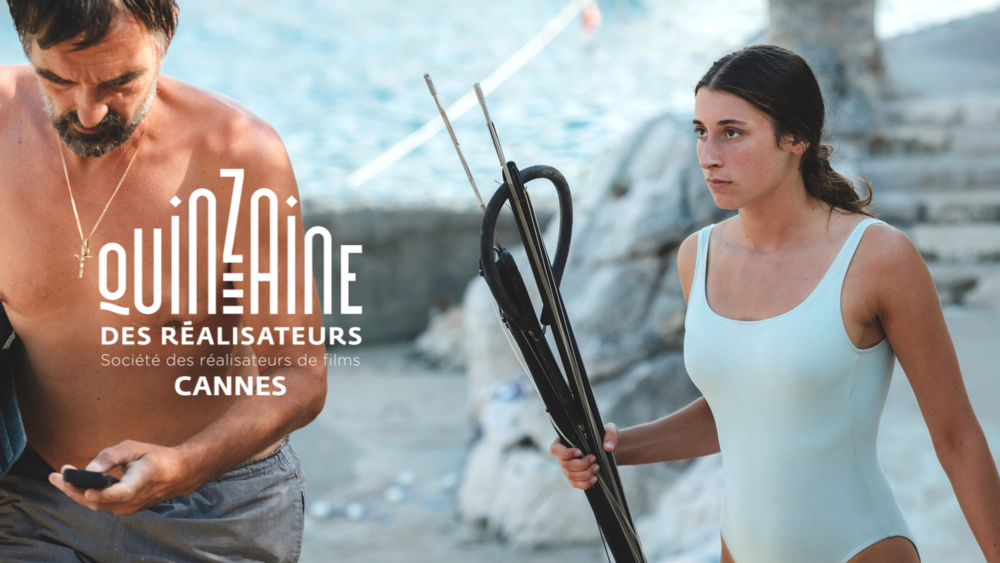 Croatian director Antoneta Alamat Kusijanović’s debut feature film, Murina, is also on the program of Directors’ Fortnight. SEEfest audiences have seen Kusijanović’s acclaimed short film Into the Blue at our 2018 festival.
Croatian director Antoneta Alamat Kusijanović’s debut feature film, Murina, is also on the program of Directors’ Fortnight. SEEfest audiences have seen Kusijanović’s acclaimed short film Into the Blue at our 2018 festival.
Starring Gracija Filipović and Danish-Serbian star Danica Ćurčić (she can be seen on Netflix USA in Equinox and the upcoming The Chestnut Man), Murina explores the tensions between a restless teenager and her oppressive father when an old family friend arrives at their Croatian island home.
The cast also includes Croatian master actor Leon Lučev, one of the most sought-after thespians in the region; and Cliff Curtis, New Zealand’s actor of Maori descent best known for Whale Rider and co-starring in two upcoming Avatar films from director James Cameron.
The Hill Where Lionesses Roar, a France/Kosovo coproduction – debut feature by Luàna Bajrami, French actress from Kosovo turned auteur who’s known for A Portrait of a Lady on Fire, Céline Sciamma’s critically acclaimed film.
Somewhere in Kosovo, in a small remote village, three young women see their dreams and ambitions stifled. In their quest for independence, nothing can stop them: time to let the lionesses roar.
The 74th Cannes Film Festival is scheduled to take place from July 6 to 17, 2021.
SUPPORT SEEFEST
In order to help us bring you more SEE programming in 2021, we hope you will consider becoming a SEEfest Cine-Fan member as we continue to bring you the best film and culture from South East Europe.
SEEfest 2021: Conversations with Filmmakers – Video
Excerpts of Conversations with Filmmakers featured at #SEEfest2021
With filmmakers Marko Dješka, Nicolas Iordanou and Sylvia Nicolaides, Kata Gugić, and Elka Nikolova.
1. ALL THOSE SENSATIONS IN MY BELLY – short animation trailer
While transitioning gender from male to female, Matia struggles to find a genuine, intimate relationship with a heterosexual man.
Filmmaker: Marko Dješka
Interviewer: Casey Shuttuck, intern;
2. AMALGAMATION – short documentary trailer
A soulful portrait of a female choir revisiting traditional songs in a contemporary way, bridging past and present, with a strong voice and deep sense of community and friendship.
Filmmakers: Nicolas Iordanou and Sylvia Nicolaides
Interviewer: Daylyn Paul, intern
3. COCKPERA – short animation trailer
This short opera is inspired by Aesop’s fable The Fighting Cocks and the Eagle.
Filmmaker: Kata Gugić
Interviewer: Casey Shuttuck, intern
Interviewer: Lauren Brown, associate programmer
SUPPORT SEEFEST
In order to help us bring you more SEE programming in 2021, we hope you will consider becoming a SEEfest Cine-Fan member as we continue to bring you the best film and culture from South East Europe.
SEEfest 2021 Awards and Wrap Up – Video
Showcasing the outstanding films and events featured at SEEfest 2021…
The 2021 South East European Film Festival Filmmaker Awards
Andrea Štaka’s Mare wins Best Narrative Feature, and Catherine Harte’s Faith & Branko is named Best Documentary Feature.
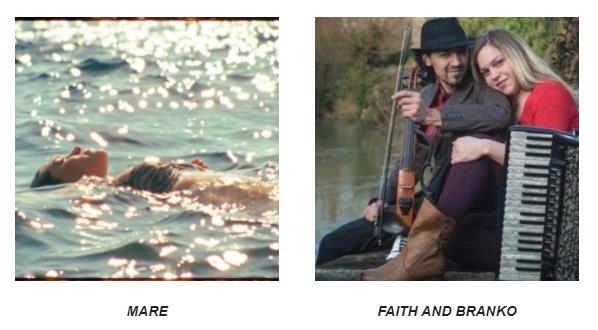 Best Cinematography awards went to In The Shadows’ Hayk Kirakosyan (Narrative), with Nun of Your Business’ Ivana Marinić Kragić’ and That Other Village’s Srđan Kovačević co-winners in the Documentary category. A complete list of awards is here.
Best Cinematography awards went to In The Shadows’ Hayk Kirakosyan (Narrative), with Nun of Your Business’ Ivana Marinić Kragić’ and That Other Village’s Srđan Kovačević co-winners in the Documentary category. A complete list of awards is here.
Audience Award winner: SO, WHAT’S FREEDOM?
The powerful drama about the 1951 deportations in Romania, SO, WHAT’S FREEDOM? by American-Romanian filmmaker Andrei Zinca, was the highest-rated film of SEEfest 2021 and the winner of the festival’s Audience Award. With a score of 88 out of a maximum of 100, this film proved to be an audience favorite in spite of the difficult subject matter and traumatic events from the country’s past.
Accepting the award, filmmaker Andrei Zinca said,
“SEEfest’s audience understands the power of cinema to reach beyond countries, beyond language barriers, and take us to places and experiences in the past that can resonate with us today. “So, What’s Freedom?” was not intended to be just a Romanian story. Freedom, the lack of it, and its manipulation by all political systems has been and still is an everyday and everywhere story.“
Congratulations to the filmmaker, the talented cast and crew, and big thanks to our audience members who judged the films with their votes.
What was your favorite film?
Let us know in the comments which films you liked! We’d love to know.
The 2021 South East European Film Festival (SEEfest) Announces Film Lineup for 16th Edition
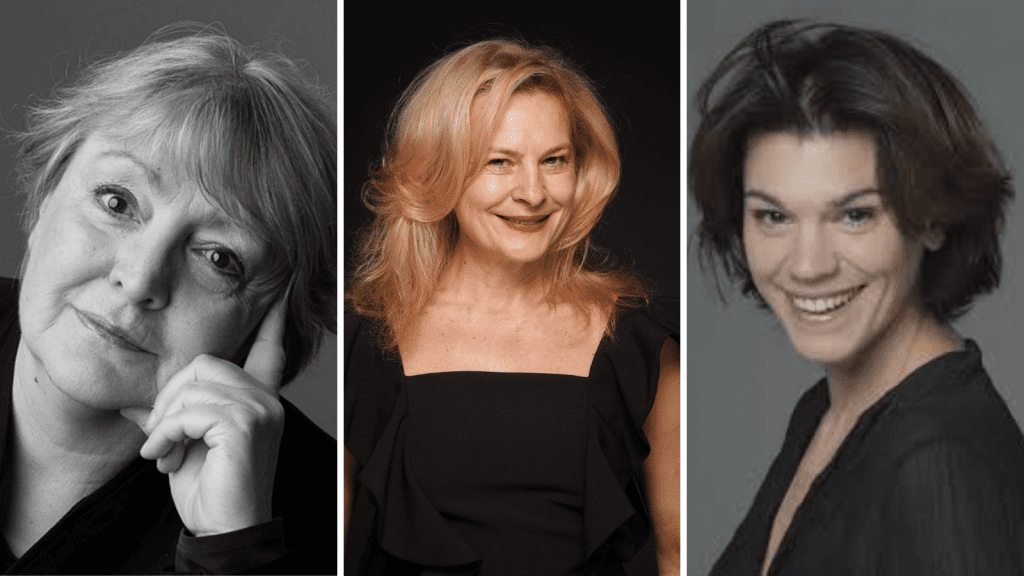
SEEfest Honorees Dubravka Ugrešić (by Shevuan Williams), Jasna Djuričić (by Nebojša Babić) , Marija Škaričić
Award-winning writer Dubravka Ugrešić will receive the SEEfest Legacy Award and Marija Škaričić (MARE) and Jasna Djuričić (QUO VADIS, AIDA?) will both receive the inaugural Legacy Acting Award.
The 2021 South East European Film Festival (SEEfest) (April 28-May 5), co-presented by ELMA, foundation for European Languages and Movies in America, announced the lineup of official selections for the 16th annual edition of the Los Angeles-based film festival. Presenting and celebrating cinematic and cultural diversity of 18 countries of the Balkans and Caucasus to American audiences, the film festival continues to provide a platform in the U.S. for the discovery of new talent from South East Europe.
SEEfest will honor internationally celebrated author Dubravka Ugrešić (“The Age of Skin,” “Baba Yaga Laid an Egg”) with this year’s Legacy Award (April 17) and Marija Škaričić (Mare) and Jasna Djuričić (Quo Vadis, Aida?) with the film festival’s inaugural Legacy Acting Award.
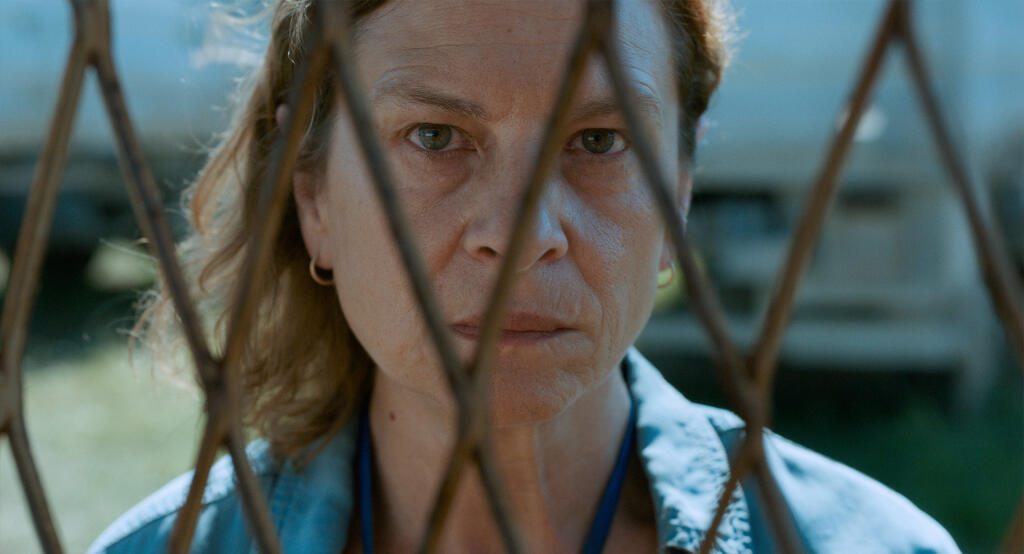
Legacy Acting Award honoree Jasna Djuričić stars in Jasmila Žbanić’s Quo Vadis, Aida?. a 2021 Academy Award nominee for International Feature Film from Bosnia Herzegovina
A true discovery film festival, this year’s virtual presentation is once again rich with premieres, including two world premieres (Elka Nikolova’s A Question of Survival and Kata Oláh’s My Digital Nomad), and two international premieres, Jadran Boban’s That Other Village, and Sidar İnan Erçelik’s Wind Horse. Among the seven North American premieres at SEEfest are Marko Djordjević’s My Morning Laughter, Gjergj Xhuvani’s final feature, My Lake, Ivan Živković’s Galeb (Tito’s Boat), Nebojša Slijepčević‘s 70, Ivana Marinić Kragić’s Nun of Your Business, Bruno Pavić’s Landscape Zero, and Pavel Cuzuioc’s Please Hold the Line. The two films making U.S. premieres are Marija Perović’s Breasts, and Catherine Harte’s Faith & Branko.
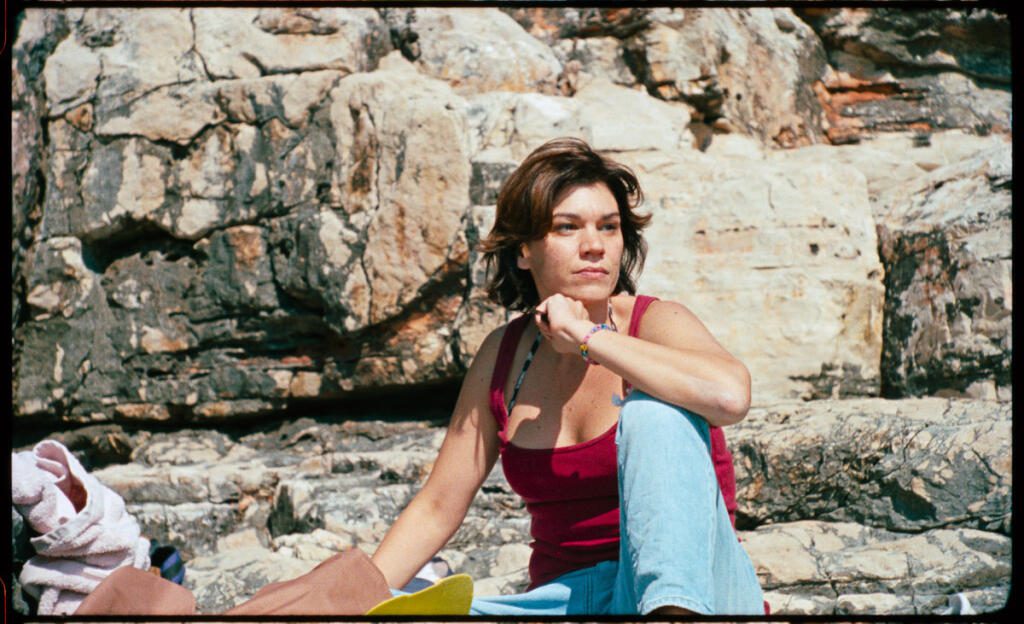
Legacy Acting Award honoree Marija Škaričić stars in two other highly anticipated films among SEEfest’s official selections.
SEEfest Executive Director Vera Mijojlić, said,
“This is another exciting year programming-wise with several films from South East Europe set to make their debut here in the States with our virtual film festival presentation. We are especially excited to host a conversation with our wonderful Legacy Award honoree Dubravka Ugrešić on April 17 and the opportunity to celebrate the great work by Marija Škaričić and Jasna Djuričić, who star in four of our highly anticipated selections, Mare, Breasts, Quo Vadis, Aida?, and My Morning Laughter with the inaugural Legacy Acting Award.”
Making their world premieres at SEEfest will be two documentaries, including Elka Nikolova’s US and Bulgarian co-production, A Question of Survival, which traces the legacy of the Holocaust in the Balkans, as seen through the eyes -and conflicting memories- of three Bulgarian Jewish survivors in New York, and Kata Oláh’s My Digital Nomad, an intimate, first-person documentary from Hungary about the nomadic lifestyle turns into an intimate conversation between mother and daughter throughout countries and years.
SEEfest’s two International premieres include; Jadran Boban’s Croatian film That Other Village about a remote village that changed twice its name, population, and its own history as it continues to be torn by never-ending historical traumas triggering new conflicts; and Sidar İnan Erçelik’s Wind Horse, a poetic Turkish film which tells the story of two shepherds from Anatolia, one of whom becomes a celebrated jockey; the film juxtaposes human desire for success with the toll on the spirit of freedom in both humans and horses.
North American premieres include; Ivana Marinić Kragić’s Nun of Your Business, a Croatian film about two young nuns, driven by their blossoming love, who choose to leave the convent and start a new life together; Marko Djordjević’s My Morning Laughter, a Serbian dramedy about a 30-year-old trying to lose his virginity; and the late Gjergj Xhuvani’s final feature, My Lake, an Albanian drama about a man who has become a small-time marijuana smuggler to support his family.
Following in the tradition of SEEfest films which bring to life world history in a dynamic way is Ivan Živković’s Galeb (Tito’s Boat), a Croatian film which tells the story of the ship that Yugoslav president Tito sailed numerous times, visiting close to 20 countries as he negotiated an alliance of non-aligned countries, the world’s largest after the United Nations. Other North American premieres include Nebojša Slijepčević‘s 70, a documentary about the LADO Ensemble, the only professional folk music and dance ensemble in Croatia.
Bruno Pavić’s Croatian film, Landscape Zero will also make its North American Premiere, as will Pavel Cuzuioc’s Austrian film Please Hold the Line. The former follows the lives of people who are either fighting for their survival among dangerous facilities surrounding their homes or coexisting with them in harmony, while the latter focuses on cable technicians in Eastern Europe as they navigate a modern-day Tower of Babel. One of the 2 films making its U.S. premiere is Catherine Harte’s Faith & Branko, an intimate story that chronicles the cross-cultural relationship between musicians Faith and Branko over seven years.
Legacy Acting Award honoree Marija Škaričić stars in two other highly anticipated films among SEEfest’s official selections. Andrea Štaka’s Mare, a multiple award-winner including the Solothurn Prize, is a Swiss and Croatian co-production about a woman dedicated to her family life, yet always feeling out of place until a chance romantic encounter with a new neighbor just may put everything to the test. Marija Perović’s Breasts, which makes its U.S. premiere, is a light-hearted drama from Montenegro about four friends from high school brought together again at their 20-year reunion, who all are forced to go beyond the usual pleasantries when it is revealed that one of them has become gravely ill.
Fellow Legacy Acting Award honoree Jasna Djuričić stars in Jasmila Žbanić’s Quo Vadis, Aida? a 2021 Academy Award nominee for International Feature Film from Bosnia Herzegovina, the film follows a translator for the UN in a small town taken over by the Serbian army forcing her to use her connections as an insider to look out for the safety of her family and people. Eugen Jebeleanu’s directorial debut Poppy Field follows the struggle of a young Romanian gendarme who tries to balance two opposing parts of his identity: that of a man working in a macho hierarchical environment and that of a closeted gay man. Andrei Zinca’s So, What’s Freedom? is a Romania and U.S. co-production inspired by real events exploring how the lives of a group of people turn when they discover their freedom has become a forced exile.
Click here to preview the complete lineup of films and preorder your tickets.
ABOUT SOUTH EAST EUROPEAN FILM FESTIVAL (SEEfest)
Twice the recipient of the prestigious festival grant from the Academy of Motion Picture Arts and Sciences, and five other awards for programming excellence from the State of California, County and City of Los Angeles, Cities of Beverly Hills and West Hollywood, and Hollywood Foreign Press Association’s festival grant, the festival’s growing list of renowned organizations which now support the festival includes the California Arts Council, Los Angeles County Board of Supervisors through the Los Angeles County Department of Arts and Culture, ELMA Foundation, UCLA Center for European and Russian Studies, Hollywood Foreign Press Association, Blue Heron Foundation, Villa Aurora artists residence, Film & Ink LLC, West Hollywood Chamber of Commerce, as well as a roster of cultural community partners representing the diversity of our State.
South East European Film Festival Los Angeles (SEEfest) is a competition festival presenting cinematic and cultural diversity of 18 countries of the Balkans and Caucasus to American audiences. It provides a platform in the U.S. for the discovery of new talent from South East Europe, with a wide selection of films, art, and literary talks, workshops, and panels. The film festival serves as the cultural hub and resource for scholars and filmmakers, and creates opportunities for cultural exchange between Hollywood industry professionals and filmmakers from South East Europe. It is a 501 © 3 non-profit, public benefit corporation. For more information, visit https://seefilmla.org/.


